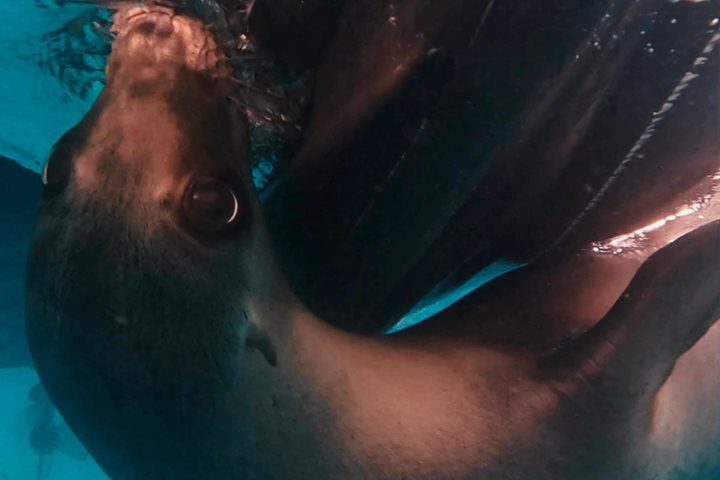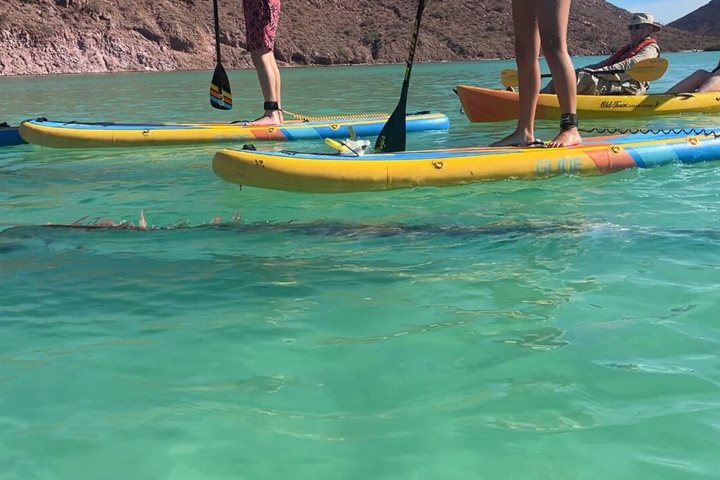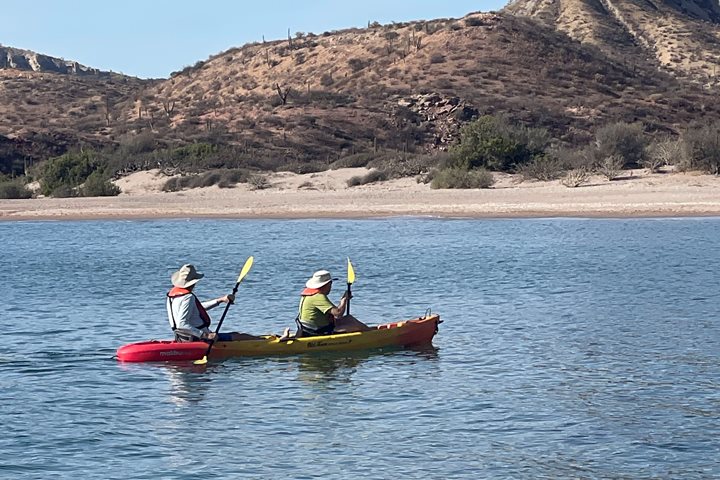Bahia Magdalena and Hull Canal
The National Geographic Sea Bird continued her voyage north along the eastern side of the Baja Peninsula. We had departed just after sunset, from Land’s End at the tip of the Baja Peninsula and the early turn from inside the Gulf of California to the Pacific Ocean had been glorious. As we moved north the sea conditions continued to build, creating ever-so-slightly rough sea conditions. The officers on the bridge slowed our engines to create the best ride possible, adding a little more time to the northbound voyage.
Just before sunrise our expedition leader made his customary announcements including our estimated arrival to the entrance to Bahia Magdalena. Due to the slightly rough evening we did not arrive to La Entrada until 11:30am. Our ride up the eastern side of Isla Santa Margarita was in large residual swells, but, they were full of life! We saw our first California gray whales showing off their flukes as they made their way towards La Entrada, a well-known mating area for gray whales.
Several large groups of long-beaked common dolphins were spotted, and with precise maneuvering, the National Geographic Sea Bird wove her way in and around many leaping and bow-riding common dolphins. The waters were rich in bird life, providing an unusual sighting of a masked booby who obligingly passed over the bow of the National Geographic Sea Bird repeatedly, giving the photographers many a chance to document this interesting sight…humans watching a booby watching humans!
The swells slowly began to lay down as the National Geographic Sea Bird began her approach into La Entrada. Several cow/calf pairs and single adult gray whales were spotted, though due to regulations we were not allowed to stop to watch whales...though, we could slow the engines and enjoy our first views of baby gray whales. The National Geographic Sea Bird continued her passage into the calm waters of Bahia Magdalena, heading north towards the entrance to Hull Canal.
Just after lunch we picked up our local pilot, Alejandro Camacho, a local fisherman whose knowledge of the waterways adds tremendously to his piloting of the Hull Canal. The canal is approximately 30 miles long, and is a narrow channel of water that lies between the northern and southern section of Bahia Magdalena.
Once the pilot’s Zodiac was tied onto the rear of the National Geographic Sea Bird, our ship began her passage into the narrow waters. The passage was decorated with a variety of mangroves and many, many birds who call this unusual habitat their home. The waters of mangroves are rich in life, bringing in several species of herons, egrets and terns to feed. The mud banks had many foraging birds looking for a late afternoon meal, while larger mammals like coyotes ambled through the mangroves also in search of food.
We reached the half-way point in Hull Canal called Devil’s Elbow in the late afternoon. The tides switch at this point; all waters heading south moving towards La Entrada, while the other half of the waters moved north towards Boca de Soledad. The channel is marked by hand-made containers showing the officers of the National Geographic Sea Bird the way into the northern section of Bahia Magdalena.
The natural history staff continued their vigil on the bow, keeping a very close count of gray whales seen during our passage from south to north. Between Devil’s Elbow and an area called La Florida, 13 cow/calf pairs were spotted along with three single adult whales. The three single animals were extremely large and most probably pregnant females.
As sunset approached, the late-winter light cast long shadows across the dune fields that make up most of the northern section of Isla Magdalena. Winds from the northwest moved across sand, water and the backs of gray whales as the National Geographic Sea Bird made her way to her evening anchorage site in the Boca de Soledad. The northern end of Isla Magdalena and the entrance out into the Pacific was swept by a strong breeze...giving pause for each of us, as we watched the sun set over yet another part of this unusual Mexican peninsula, called a “desert by the sea.”






